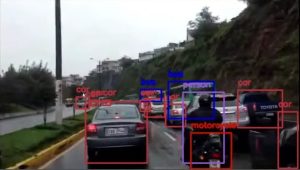Computer Vision is a subfield of Artificial Intelligence that focuses on enabling machines to interpret and analyze visual information from the world. In this blog post, we will explore the fundamentals of Computer Vision, its popular techniques, and its applications.
What is Computer Vision?
- Computer Vision aims to develop algorithms and systems that can process, analyze, and understand visual data, such as images and videos.
- The primary goal of Computer Vision is to create machines that can perform tasks requiring human-like visual perception and understanding.
Key Techniques in Computer Vision:
- Image Preprocessing: Enhancing image quality by applying transformations, such as resizing, normalization, or filtering.
- Feature Extraction: Identifying distinctive and informative features within an image, such as edges, corners, or textures.
- Object Detection: Locating and identifying objects within an image or video.
- Image Segmentation: Partitioning an image into multiple regions based on pixel similarity.
Popular Computer Vision Algorithms and Models:
- Classical Algorithms: Techniques such as edge detection, feature matching, or template matching for specific tasks.
- Machine Learning Models: Employing supervised learning techniques, such as Support Vector Machines or Random Forests, to classify or detect objects in images.
- Deep Learning Models: Using neural networks, particularly Convolutional Neural Networks (CNNs), to learn hierarchical feature representations for a wide range of tasks.

Source: Comunidad de Software Libre Hackem [Research Group] https://www.youtube.com/watch?v=ZmMFsL1ahI4
Applications of Computer Vision:
- Facial Recognition: Identifying or verifying a person’s identity based on their facial features.
- Autonomous Vehicles: Enabling self-driving cars to navigate and make decisions based on visual information.
- Medical Imaging: Assisting in the diagnosis and treatment planning of diseases by analyzing medical images, such as X-rays or MRIs.
Challenges and Future Directions:
- Handling occlusion, varying lighting conditions, and different viewpoints in image analysis.
- Developing real-time computer vision systems that can process and analyze large volumes of visual data efficiently.
- Ensuring fairness, privacy, and ethical considerations in the development and deployment of computer vision applications.

0 Comments